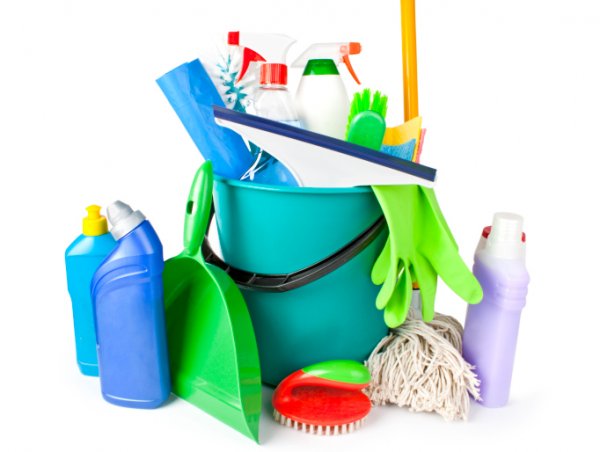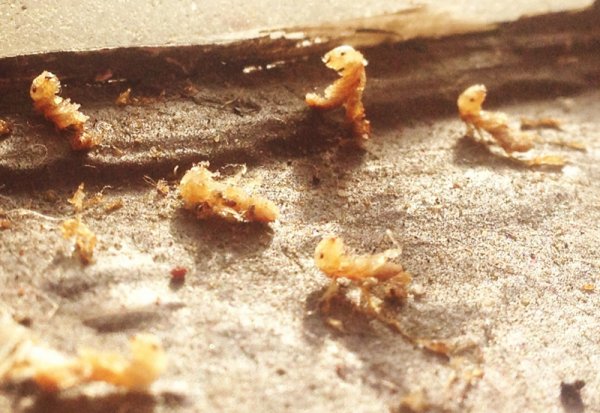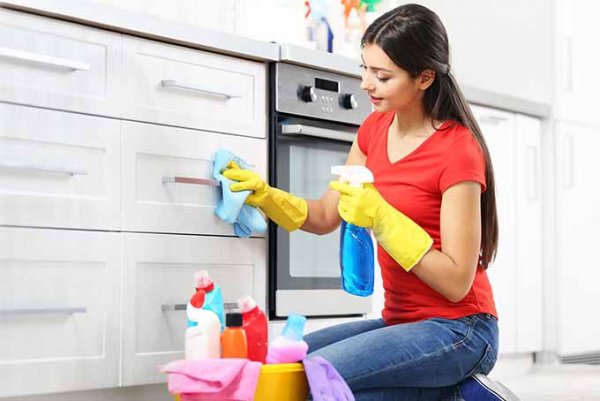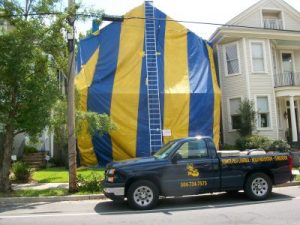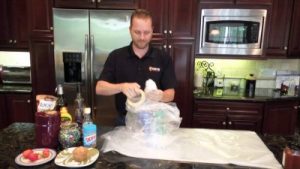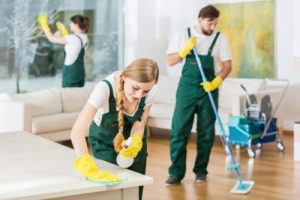
Sometimes termites can become a serious problem and regular treatments may not be enough.
In this case tent fumigation can be done.
Of course, this way of treatment will not solve subterranean termite problem, but it will help to kill all drywood termites (and all other possible insects inside of the house).
Hide content
- Chemicals which invade your house
- What you will need to clean your house?
- How to clean your house?
- What you should remember?
- How to make your cleaning easier?
- Useful articles
- Helpful video
- Conclusion
Tent fumigation is very effective treatment as it penetrates into wood and kills termite colonies. Other usual treatment ways are not always able to perform the same function.
Tent fumigation consists of several simple stages which are not easy to be performed. Firstly, exterminators seal the house under the tent, and secondly, make it full of poisonous gas using different bombs and foggers.
Fumigation is done with special chemicals which do not have smell and color. During fumigation no people, pets or plants are allowed in the house.Exterminators claim that after fumigation this gas dissipates very quickly and there is no need in washing dishes or clothes. But if you feel the desire, you can do some cleaning after tenting for termites.
Chemicals which invade your house
There are different chemicals which are used for tent fumigation and they are all toxic.
The first one is chloropicrin. It is also called tear gas.
The name sounds strange but exterminators may use it at the beginning of fumigation.
This gas will not poison anyone or anything (especially termites), but it used to identify whether there are leaks in tent construction or not.
So, if someone outside of the house has reaction to the gas (he or she has tears), that means that tent needs to be sealed better.
Other chemical gases are called vaporized methyl and sulfuryl bromides. These pesticides are used for tent fumigation and their aim is to kill all termites inside of the house.
These fumigants are poisonous for all living creatures, that’s why staying in the house with animals or even leaving plants inside is forbidden. But this is all while tent fumigation is going on and gases are in the house.When fumigants dissipate, you can enter the house (after special inspection the exterminator should let you in by providing safety warranty or certificate).
Learn more about drywood termites: signs of their activity; best methods of treatment: spot treatment and DIY methods; how to get rid of them in furniture?
What you will need to clean your house?
Cleaning after termite fumigation may take a lot of time but if you decide to do it by yourself you will need some cleaning accessories:
- cloth;
- water;
- vinegar;
- vacuum cleaner;
- soap or shampoo;
- washing machine or laundry.
How to clean your house?
When Pest Company finishes tent fumigation, you may wish to do some cleaning. In this case here are some advices how you can do it in a better way:
- Ask your pest company to find a professional cleaning company, or do it by yourself. Don’t forget to find out whether this cleaning company has the experience with cleaning after tenting house for termites or not.
- If you are planning to do cleaning by yourself, firstly, you will have to examine all the food which you had left in the house before starting fumigation. If you find any product which bag is open or damaged, throw it away immediately.
- Most probably you will find dead termites somewhere in the house. If this happens, collect them using vacuum cleaner. Don’t forget to clean this bag outside of the house.
- Don’t forget to use vacuum cleaner to clean floors and other spaces under furniture. You will have to move furniture if it is needed.
- All the things that can’t be washed in washing machines (chairs, sofas, etc.) are to be cleaned with vacuum cleaner.
- All the closets and cupboards are to be cleaned with vacuum cleaner as well. If you have some things inside, take them out first. If these things were not bagged, you will have to wash them as well.
- Open all the doors and windows for extra air ventilation of your house.
- All possible dry surfaces are to be wiped with wet cloth. When you finish wiping, you need to throw this cloth away. It would be much better if you wipe one more time. The second wiping can be done with special washing detergents, but you can also use vinegar instead.
Your home-made detergent may consist of half vinegar and half water. Don’t forget to clean with wet cloth all the surfaces inside of cupboards, closets, etc. as well. Outsides, doors, handles, etc. should be also wiped. Remember that you will need to throw this cloth away.
- You will also have to mop all the floors. Here you may use water-vinegar cleaner as well.
- Don’t forget to wash all the surfaces in the bathroom.
- If you haven’t removed or covered different materials (curtains, pillows, clothes, carpets, etc.), you can wash them with shampoo or soap.
- When you are planning to wash your clothes, pillows, toys, curtains, etc., you can always use your own washing machine (which you have already wiped), or, as another option, you can go to laundry.
- If you feel uncomfortable, you can stay for a few days more somewhere else. Don’t forget that in this case aeration of you house is needed. Don’t be afraid to ask your pest company questions.
Notice! Sometimes after tent fumigation you may see a few termites in your house. Don’t worry as it may take a few days more for the fumigant to kill termites.If you feel that you don’t need a lot of cleaning and think that regular sweeping after fumigation will be enough, try to choose quick wet cleaning instead of sweeping.
Small gas particles might stay in dust (if there was some). Dust makes it harder for the gas to dissipate quickly. So, in order to avoid breathing problems choose wet cleaning or wear special respiratory masks while sweeping.
Learn more about subterranean termites: signs of their activity; best methods of treatment and DIY methods. Eastern subterranean termites and their tunnels and tubes with photo.
What you should remember?
Before and after tent fumigation you should pay more attention to your carpets, mattresses and sometimes clothes.
As preparation measure exterminators ask to remove all possible things or cover them with plastic, or put them in bags if possible.
Bags will protect your clothes better if you put one inside of another making double-bag.
You should remember that mattresses and carpets are hard to be air ventilated, that’s why poisonous gay may stay inside if you don’t protect them.
The problem is that not all the carpets can be removed from the house, so you will need to protect surfaces better. As far as you will not be able to seal carpets completely, there is a huge possibility that fumigants will penetrate them.
If this happens, do not let you pets or children sit on the carpet; and, of course, do not leave any food close to the floor.There are two ways how you can solve your carpet problem (this can be said about mattresses as well):
- Call a professional cleaning company which has experience with cleaning after tent fumigation.
- You can air ventilate your carpet. But this option will take a lot of time. You will need minimum two weeks in order to make your carpet safe.
How to make your cleaning easier?
If you want to keep yourself, your family and pets safe, you will have to double-bag or remove some things from the house. The list of those things is quite long: food, toys, medicines, tobacco, clothes, all the things with plastic covering, etc.
Make sure you have checked all the list and try to do wet cleaning before tent fumigation (in order to get rid of dust which may collect poisonous particles).
Here you can learn more information about tenting: dangers for termites, preparing for fumigation, how long does this procedure last?
Useful articles
If you interested in more information of termites we recommend you to read the following articles:
- All types of termites. Are they harmful to humans? Can they bite you? And what is the difference between drywood and subterranean ones?
- What does swarmers of different species look like: drywood, subterranean, formosan?
- Signs of infestation outside and in the house: in walls or furniture.
- What does termite holes look like? What is droppings and is it toxic to humans? Do termites make noises?
- Posible termite damage, how does it look like? Examples of damage in walls and wood floors.
- All about flying termites: how do they look like, swarming season and what to do if there are swarmers in your house?
- How do they do nests and mounds? How to find it in your garden or inside the house?
- Termite life cycle – from egg to larvae. And social hierarchy: workers, soldiers, queen.
Helpful video
In order to make your cleaning easier we gathered great music playlist for cleaning the house:
Conclusion
Sometimes it may be better to call professional cleaning companies. This option will not save your money but it will save your time.
